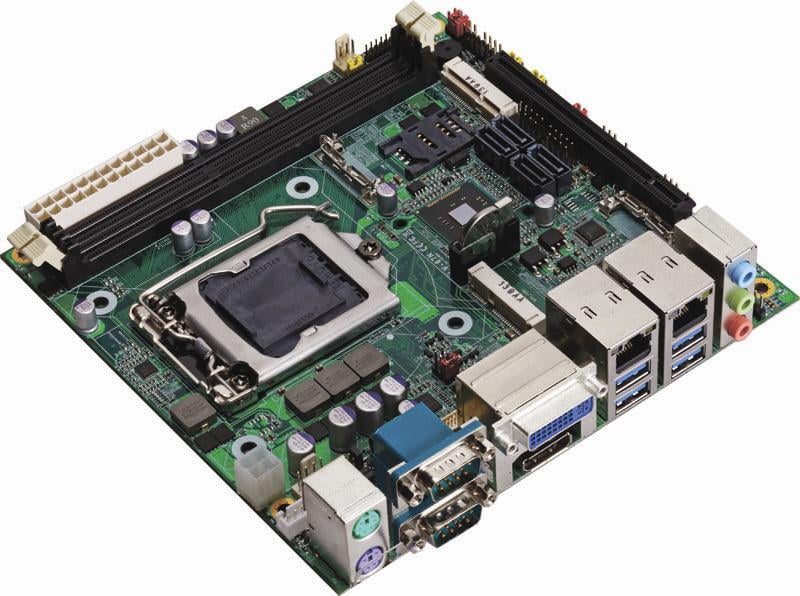
It’s the End of the Line for Haswell Chipsets
Posted on June 2, 2020
Of late, Intel has been aggressively pruning its product lines. Pushed into a corner by AMD’s spectacular success with its Ryzen series of chips, Intel has been forced to reassess its strategy.
And the latest casualty in this microprocessor war is the tried and tested line of Lynx Point chipsets. Used as a core for a large range of affordable motherboards in the last few years, these chipsets are mostly associated with the Haswell line of processors and are often called Haswell chipsets instead.
But which models are included in this lineup? Why are they being discontinued? And more importantly, what are they being replaced with? Let’s find out.
An Introduction to Chipsets
Many of you might be wondering about what exactly a chipset is. After all, when checking out technical specifications of PCs, one mostly hears about processors and RAM. What is the role of the chipset?
A chipset is basically the base of the motherboard. It handles all communication and data transfer between the processor and the various memory modules, apart from controlling input/output functions and connections to the various peripherals.
Things like the graphics card, USB, or hard disk drives are all linked to the processor through the motherboard chipset. It is the chipset that decides the supported hardware and compatibility of the system, with only a few extraneous features like audio controllers and overclocking capability added by motherboard manufacturers.
Lynx Point and Haswell: A Winning Combination
Interestingly, Haswell refers to the line of processors commonly used with these chipsets, no the chipsets themselves. The chipsets are a part of the Lynx Point variant, released alongside the Haswell processors in 2013 to serve as the optimum base for building PCs based on them.
These 4th generation Intel processors were some of the first to offload typical motherboard functions onto the processor itself, a trend that continues to this day.
For example, controlling the RAM and the PCI-E lanes used for graphic cards was the domain of the motherboard. With the Haswell chips, however, these critical controls were passed to the CPU instead. As a result, the compatibility of RAM modules and expansion cards becomes tied to the processor itself, rather than the motherboard.
The Lynx Point chipsets were made with this very architecture in mind. Sporting the now well known LGA 1150 socket, these chipsets became synonymous with the Haswell processors released for both home and enterprise users.
Q87 and QM87 – Powering Industrial Applications
The specifications of the chipset are especially important for industrial computers, as these PCs need to connect with a large number of peripheral devices to function.
Computers meant for server racks, for example, usually host a handful of HDDs on each individual system – something that is hard to achieve with the usual desktop-friendly chipsets with their limited SATA connectors.
That is where the Q87 comes in. With six high-speed SATA ports (boasting of a 6Gb/s transfer speed) and the same number of USB 3.0 ports, the chipset is a perfect fit for any industrial configuration.
Added to that are several of Intel’s special features and services for enterprises, such as Intel vPro, Identity Protection, iSIPP, and Intel Small Business Advantage.
It comes as no surprise then that the Q87 and its mobile-friendly counterpart, the QM87, became the de-facto choices for building motherboards for embedded systems. The latter proved particularly useful for somewhat leaner builds that do need the level of power the Q87 offers.
H81 – For Smaller Systems
In some applications, the size (and the cost) of each computer is a very important factor. The H81 chipset is a good choice for building these systems, as it offers decent performance at a very affordable price.
With only two high-speed SATA ports and USB 3.0 headers, it is not going to host a large array of connected devices. Instead, the H81 is meant for compact embedded computers with a small form factor.
Fanless computers, for example, require systems with a smaller heat and power footprint and have only a limited number of peripherals. Such computers can be built very cost-effectively using the H81 chipset and a budget Haswell processor.
It is for this reason that the chipset was also favored for desktop computers based on the 4th generation CPUs.
Why are these chipsets being discontinued?
Even seven years after the Haswell processors were first launched, a large number of users continue to rely on these chipsets. These include both commercial users with large scale requirements and general customers building personal computers.
It was only due to this immense popularity of this combination that Intel continued the chipsets beyond the expected EOL of 2015. But the 32nm process has gotten too outdated at this point, and with much better (and equally cost-effective) alternatives in the market, Intel has finally decided to pull the plug on the long-running Haswell chipsets.
What Now? The Intel 300 Series
The Comet Lake processors are Intel’s current flagship lineup. These 14nm chips far eclipse the performance of the finest Haswell processors, handily beating even the well-received Skylake processors.
The only problem in the way of mass adoption of these CPUs was the dearth of low-cost chipsets that could be used to build home computers as well as embedded systems.
With the launch of the Intel 300 series of chipsets, motherboard manufacturers finally have a budget-friendly option for housing the Comet Lake processors. These chipsets possess the LGA 1151 socket, which when coupled with the high-speed PCI-E 3.0 translates to a very efficiently performing system.
Transitioning from the discontinued Haswell chipsets (and processors) to these Comet Lake chipsets and CPUs is not only necessary now, but also beneficial. For while it can be a pain to migrate a large computing ecosystem to a completely new type of architecture, the performance gains made by doing so can make it worthwhile.
